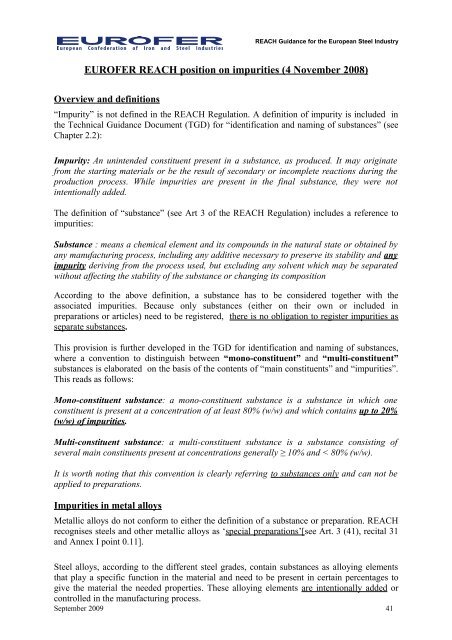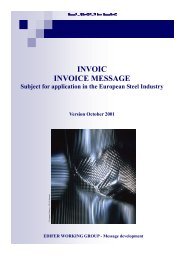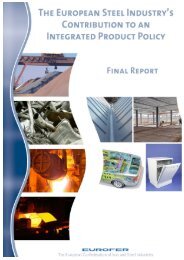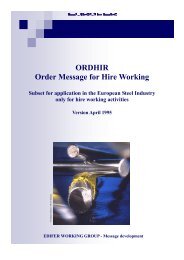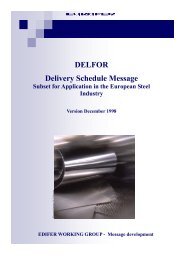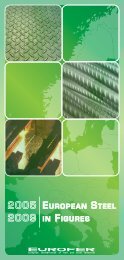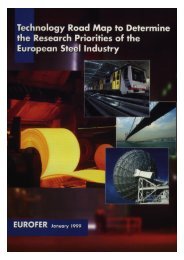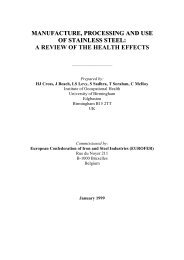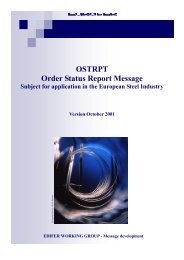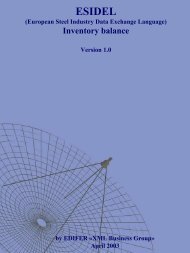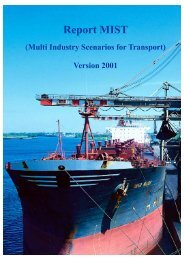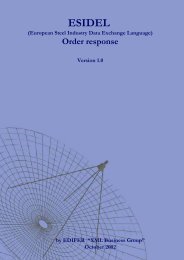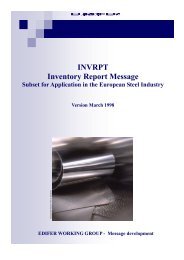EUROFER REACH guidance for the European Steel Industry. 09.09 ...
EUROFER REACH guidance for the European Steel Industry. 09.09 ...
EUROFER REACH guidance for the European Steel Industry. 09.09 ...
You also want an ePaper? Increase the reach of your titles
YUMPU automatically turns print PDFs into web optimized ePapers that Google loves.
<strong>REACH</strong> Guidance <strong>for</strong> <strong>the</strong> <strong>European</strong> <strong>Steel</strong> <strong>Industry</strong><br />
<strong>EUROFER</strong> <strong>REACH</strong> position on impurities (4 November 2008)<br />
Overview and definitions<br />
“Impurity” is not defined in <strong>the</strong> <strong>REACH</strong> Regulation. A definition of impurity is included in<br />
<strong>the</strong> Technical Guidance Document (TGD) <strong>for</strong> “identification and naming of substances” (see<br />
Chapter 2.2):<br />
Impurity: An unintended constituent present in a substance, as produced. It may originate<br />
from <strong>the</strong> starting materials or be <strong>the</strong> result of secondary or incomplete reactions during <strong>the</strong><br />
production process. While impurities are present in <strong>the</strong> final substance, <strong>the</strong>y were not<br />
intentionally added.<br />
The definition of “substance” (see Art 3 of <strong>the</strong> <strong>REACH</strong> Regulation) includes a reference to<br />
impurities:<br />
Substance : means a chemical element and its compounds in <strong>the</strong> natural state or obtained by<br />
any manufacturing process, including any additive necessary to preserve its stability and any<br />
impurity deriving from <strong>the</strong> process used, but excluding any solvent which may be separated<br />
without affecting <strong>the</strong> stability of <strong>the</strong> substance or changing its composition<br />
According to <strong>the</strong> above definition, a substance has to be considered toge<strong>the</strong>r with <strong>the</strong><br />
associated impurities. Because only substances (ei<strong>the</strong>r on <strong>the</strong>ir own or included in<br />
preparations or articles) need to be registered, <strong>the</strong>re is no obligation to register impurities as<br />
separate substances.<br />
This provision is fur<strong>the</strong>r developed in <strong>the</strong> TGD <strong>for</strong> identification and naming of substances,<br />
where a convention to distinguish between “mono-constituent” and “multi-constituent”<br />
substances is elaborated on <strong>the</strong> basis of <strong>the</strong> contents of “main constituents” and “impurities”.<br />
This reads as follows:<br />
Mono-constituent substance: a mono-constituent substance is a substance in which one<br />
constituent is present at a concentration of at least 80% (w/w) and which contains up to 20%<br />
(w/w) of impurities.<br />
Multi-constituent substance: a multi-constituent substance is a substance consisting of<br />
several main constituents present at concentrations generally ≥ 10% and < 80% (w/w).<br />
It is worth noting that this convention is clearly referring to substances only and can not be<br />
applied to preparations.<br />
Impurities in metal alloys<br />
Metallic alloys do not con<strong>for</strong>m to ei<strong>the</strong>r <strong>the</strong> definition of a substance or preparation. <strong>REACH</strong><br />
recognises steels and o<strong>the</strong>r metallic alloys as ‘special preparations’[see Art. 3 (41), recital 31<br />
and Annex I point 0.11].<br />
<strong>Steel</strong> alloys, according to <strong>the</strong> different steel grades, contain substances as alloying elements<br />
that play a specific function in <strong>the</strong> material and need to be present in certain percentages to<br />
give <strong>the</strong> material <strong>the</strong> needed properties. These alloying elements are intentionally added or<br />
controlled in <strong>the</strong> manufacturing process.<br />
September 2009 41


